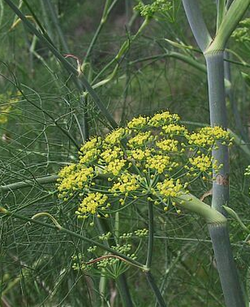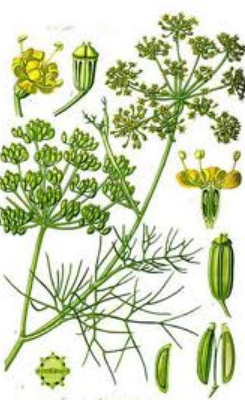 Foeniculum vulgare, fennel Foeniculum vulgare, fennel We can think of at least 180 great forest garden & perennial crops for cold climate Sweden. Want to hear about them? Over the course of the next year we will profile 5 a week on the blog. Perennial plants and crops offer a low energy, oil & resource input based foundation for future-proof agricultures. By default if an agriculture is to be called regenerative the bottom line is that it must be soil building, not soil depleting. Relentless deep tillage & poor soil husbandry (wifery?!) contributes to the majority of the 24 billion tons of topsoil lost every year on planet water. We are going to be focused on holistic polyculture grazing and perennial production at ridgedale over most of the site as this represents the most effective way to restore our degraded landscape, produce high value produce and ensure the future resource base we are managing holistically for in our decision making.  Genus Foeniculum Species vulgare Common Name fennel Form herb Habit clumping Origin Europe Light sun to part Moisture dry to mesic Edible culinary, tea Leaves can be raw or cooked, and have a delicious aniseed flavour, the young leaves are best since older ones soon become tough. They are often used as a garnish on raw or cooked dishes and make a very pleasant addition to salads. They help to improve digestion and so are particularly useful with oily foods. Leaf stalks and flower heads can be eaten raw or cooked, and have a similar aniseed flavour to the leaves. The aromatic seeds are used as a flavouring in cakes, bread, stuffings, etc. The sprouted seeds can be added to salads. An essential oil from the fully ripened and dried seed is used as a food flavouring in similar ways to the whole seed. The root is eaten cooked, and is somewhat parsnip-like. The leaves or the seeds can be used to make a pleasant-tasting herbal tea. The plant was formerly used as a strewing herb. Skin contact with the sap or essential oil can cause photo-sensitivity and/or dermatitis in some people. Ingestion of the oil can cause vomiting, seizures and pulmonary oedema. Avoid for small children. Avoid if cirrhosis/liver disorders. Fennel has a long history of herbal use and is a commonly used household remedy, being useful in the treatment of a variety of complaints, especially those of the digestive system. The seeds, leaves and roots can be used, but the seeds are most active medicinally and are the part normally used. An essential oil is often extracted from the fully ripened and dried seed for medicinal use, though it should not be given to pregnant women. The plant is analgesic, anti-inflammatory, antispasmodic, aromatic, carminative, diuretic, emmenagogue, expectorant, galactogogue, hallucinogenic, laxative, stimulant and stomachic. An infusion is used in the treatment of indigestion, abdominal distension, stomach pains, etc. It helps in the treatment of kidney stones and, when combined with a urinary disinfectant like Arctostaphylos uva-ursi, makes an effective treatment for cystitis. It can also be used as a gargle for sore throats and as an eyewash for sore eyes and conjunctivitis. The seed yields up to 5% of an essential oil. This is used medicinally, as a food flavouring, in toothpastes, soaps, perfumery, air fresheners, etc. The flavour of fennel oil depends upon its two main constituents. 'Fenchone' is a bitter tasting element whilst 'anethole' has a sweet anise-like flavour. The proportions of these two ingredients varies according to strain and region. Plants growing in the Mediterranean and southern Europe usually have a sweet oil whilst plants growing in central and northern Europe usually produce a more bitter oil. The quality of the oil also depends upon how well the seed has been dried - the oil from fully ripened and dried seeds being much sweeter and more fragrant. The dried plant is an insect repellent, the crushed leaves are effective for keeping dogs free of fleas. Yellow and brown dyes are obtained from the flowers and leaves combined. OUR FRIENDS AT PFAF HAVE AN AMAZING DATABASE OF SPECIES (UK BASED);Want updates on articles, research, Trainings, etc? You can customize our newsletter to receive the updates you actually want...
2 Comments
Keith Rose
11/2/2014 08:27:25 pm
Reply
laurie
12/2/2014 10:59:26 am
Reply
Leave a Reply. |
Details
Like us on FB Below for regular updatesStay up to date with customized updates you want to receive
Upcoming coursesArchives
December 2016
Categories
All
|

 RSS Feed
RSS Feed